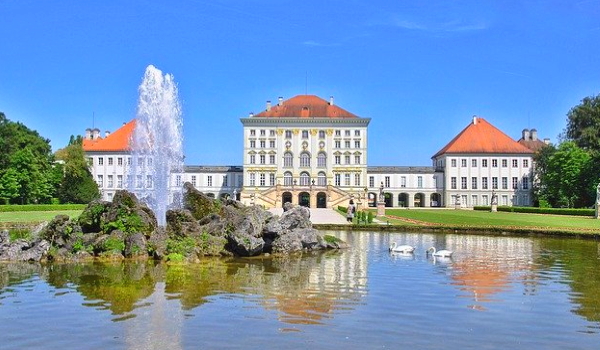Top 10 Tourist Attractions You Must Visit in Munich
10. Nymphenburg Palace
Nymphenburg Palace, located in Munich, Germany, is a magnificent Baroque palace that served as the summer residence of the Bavarian monarchs. Nymphenburg Palace was commissioned by Elector Ferdinand Maria of Bavaria and his wife, Henriette Adelaide of Savoy, in 1664 as a summer residence and hunting lodge. Over the centuries, it underwent several expansions and renovations under various rulers of the Wittelsbach dynasty. It features a central corps de logis flanked by symmetrical wings, grand courtyards, ornate facades, and decorative elements such as statues, fountains, and intricate stucco work. The palace is surrounded by sprawling gardens and parklands designed in the Baroque and Rococo styles. The gardens feature manicured lawns, flower beds, water features, and wooded areas, as well as several pavilions, follies, and sculptural adornments. Within the palace grounds are several pavilions and outbuildings, including the Amalienburg, Badenburg, Pagodenburg, and Magdalenenklause, each designed for specific purposes such as leisure, entertainment, or religious contemplation.

Adjacent to the palace is the Nymphenburg Porcelain Manufactory, founded in 1747 by Elector Max III Joseph of Bavaria. The manufactory produces exquisite, handcrafted porcelain objects, including tableware, figurines, and decorative pieces. Today, Nymphenburg Palace is open to the public as a museum, allowing visitors to explore its rich history, architecture, and art collections. The palace also hosts temporary exhibitions, cultural events, and concerts throughout the year. Visitors to Nymphenburg Palace can explore its opulent rooms, including the Great Hall, Gallery of Beauties, Hall of Mirrors, and Chinese Cabinets. Nymphenburg Palace is easily accessible by public transportation from the center of Munich. Guided tours are available for visitors who wish to learn more about the palace’s history and significance. Nymphenburg Palace stands as a testament to the wealth, power, and artistic patronage of the Bavarian rulers and remains a symbol of Munich’s rich cultural heritage.